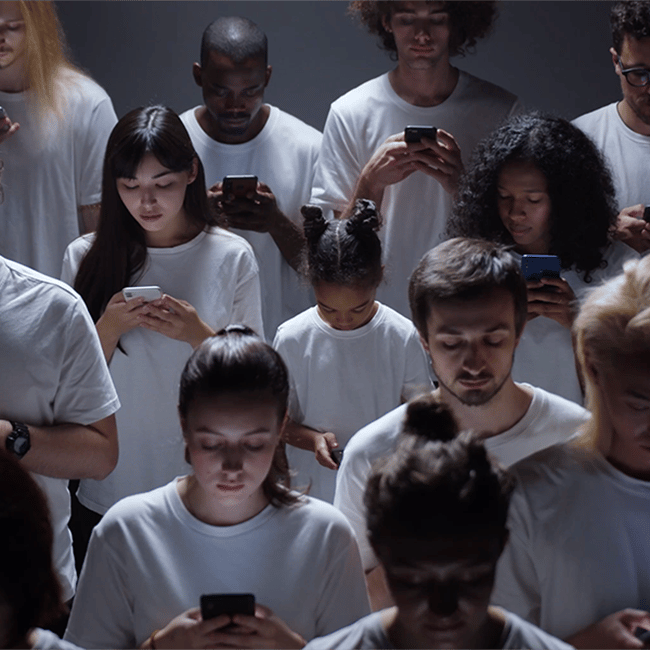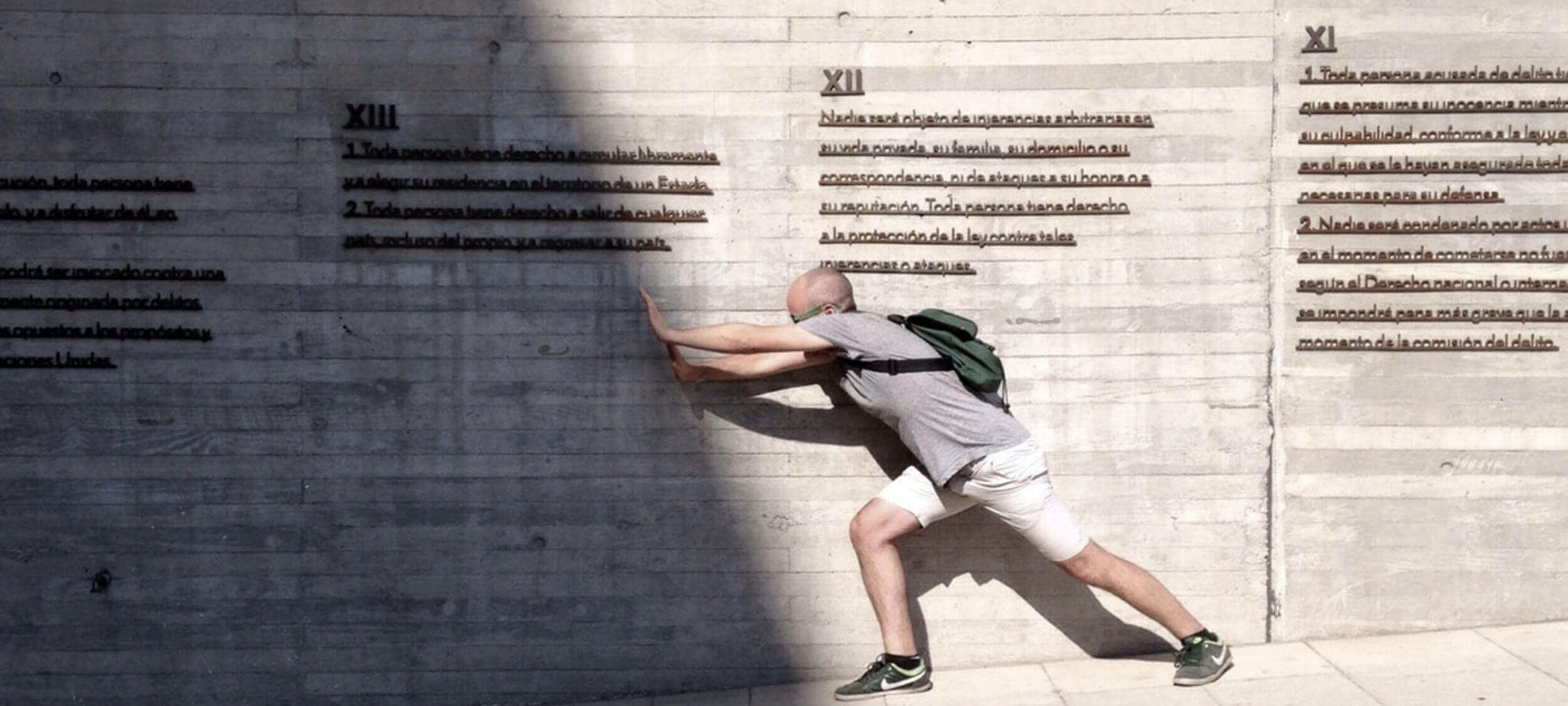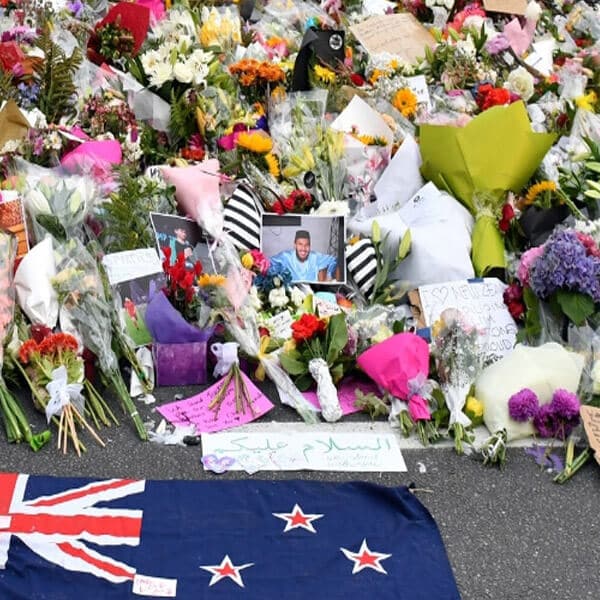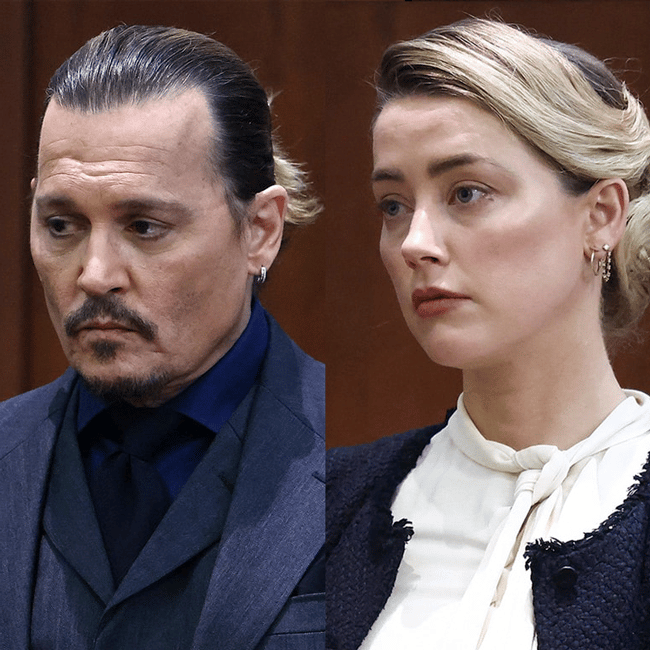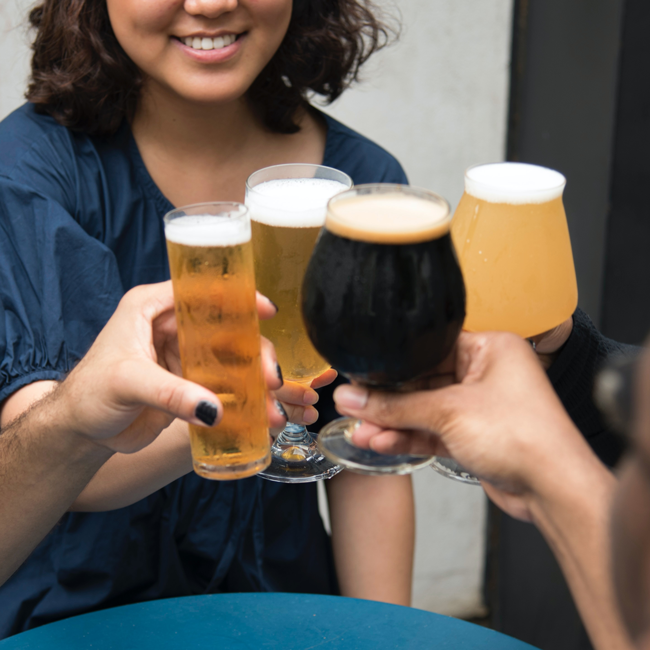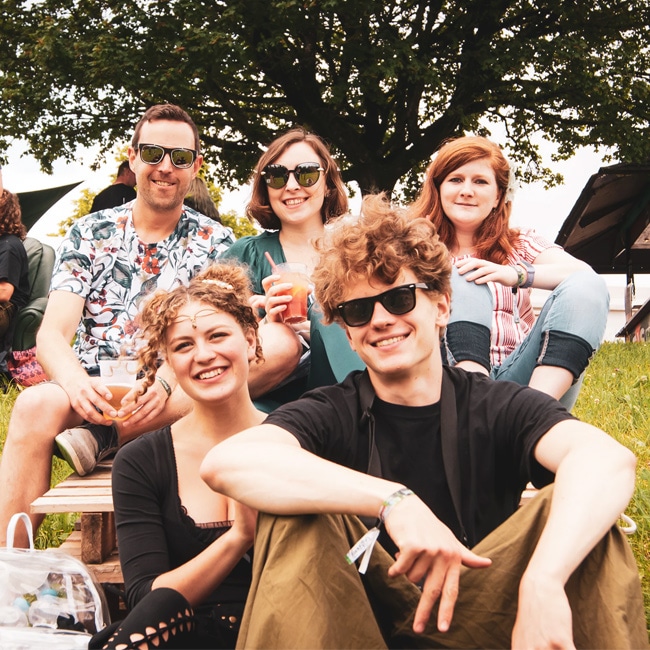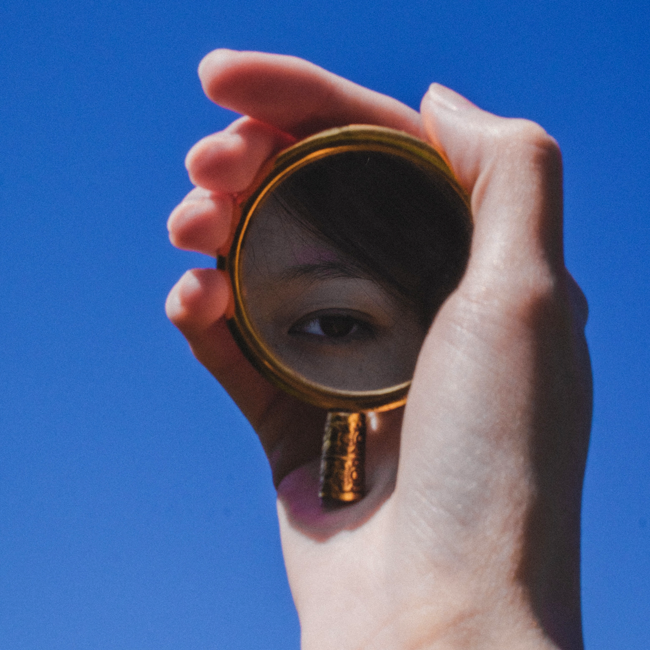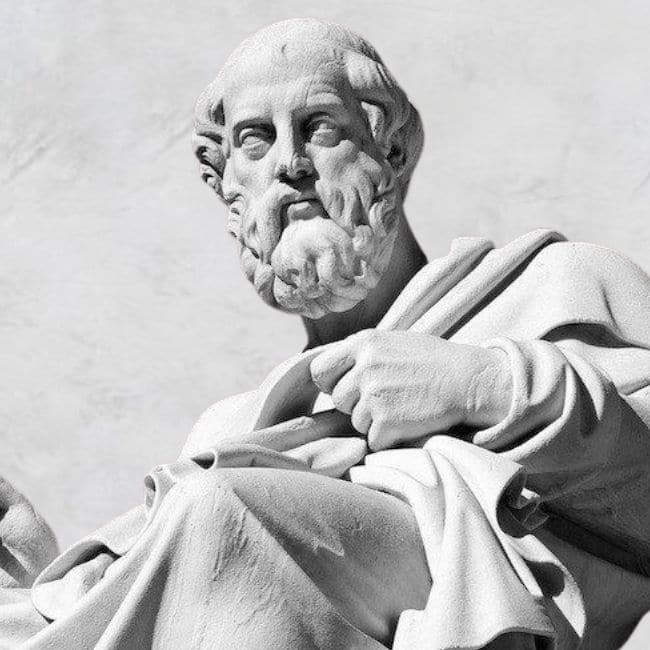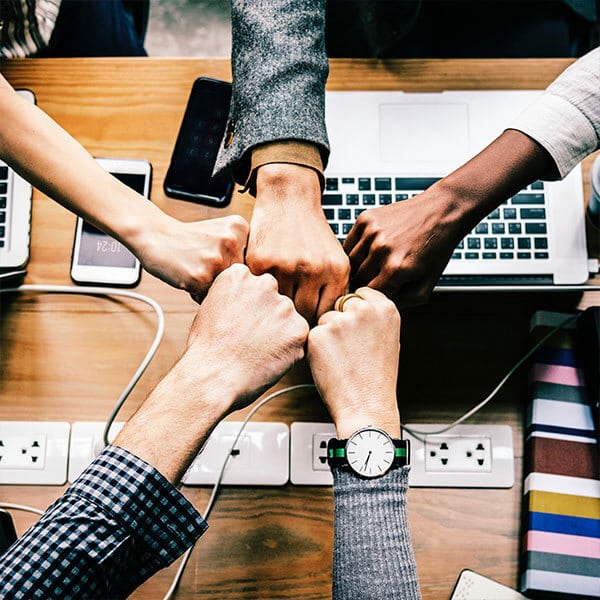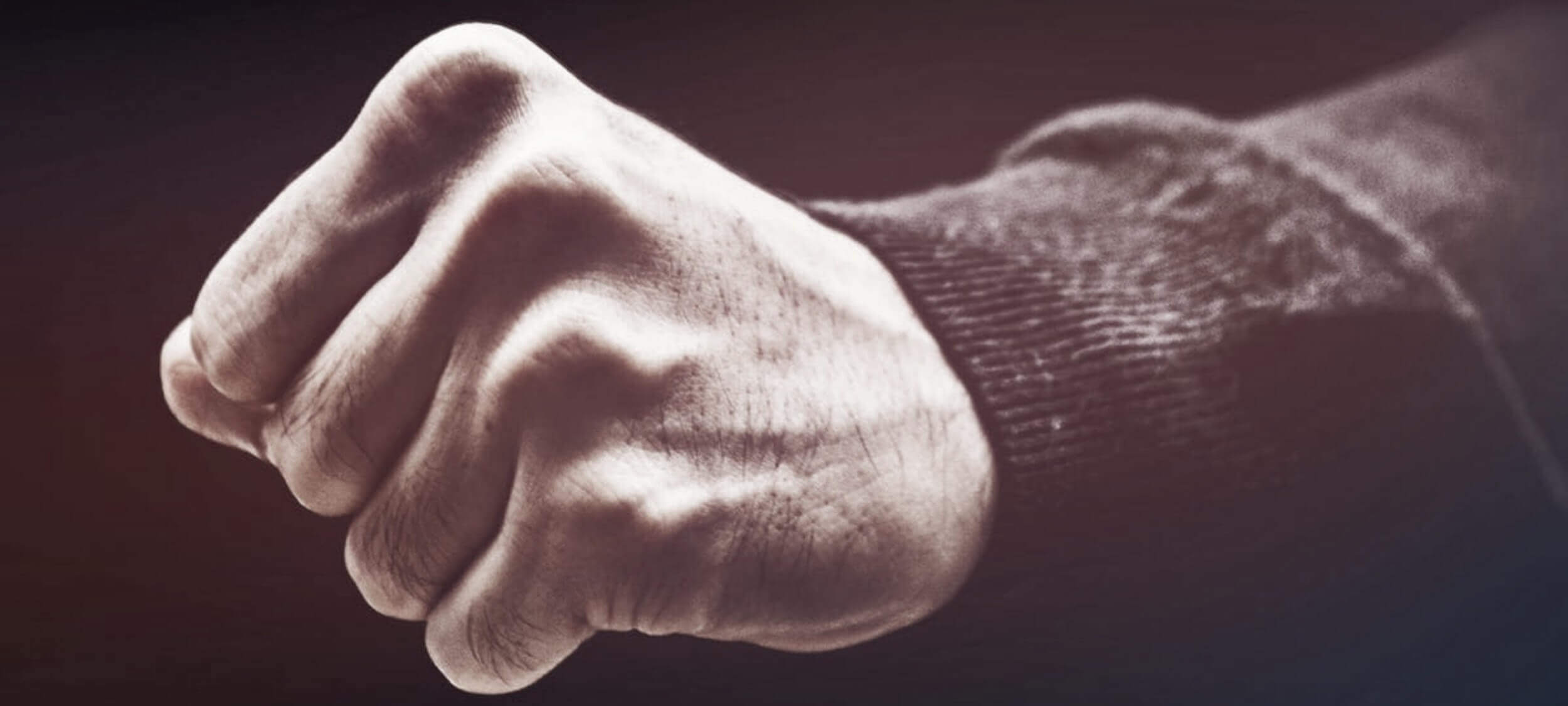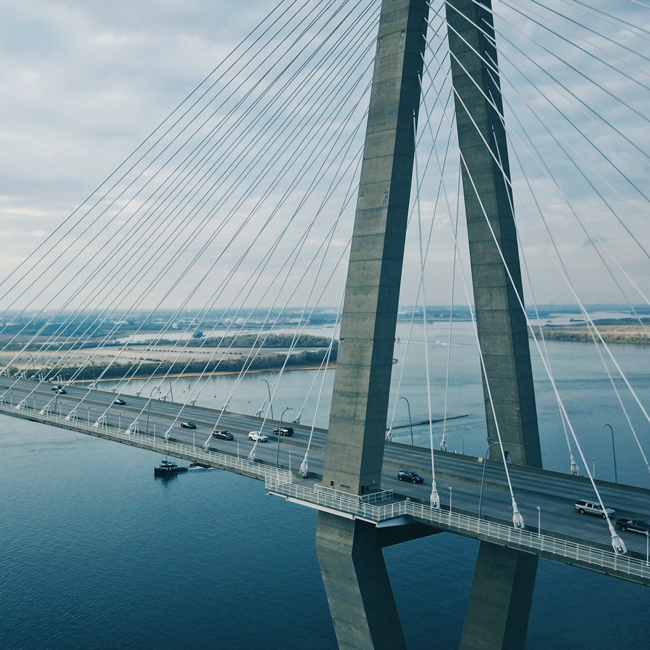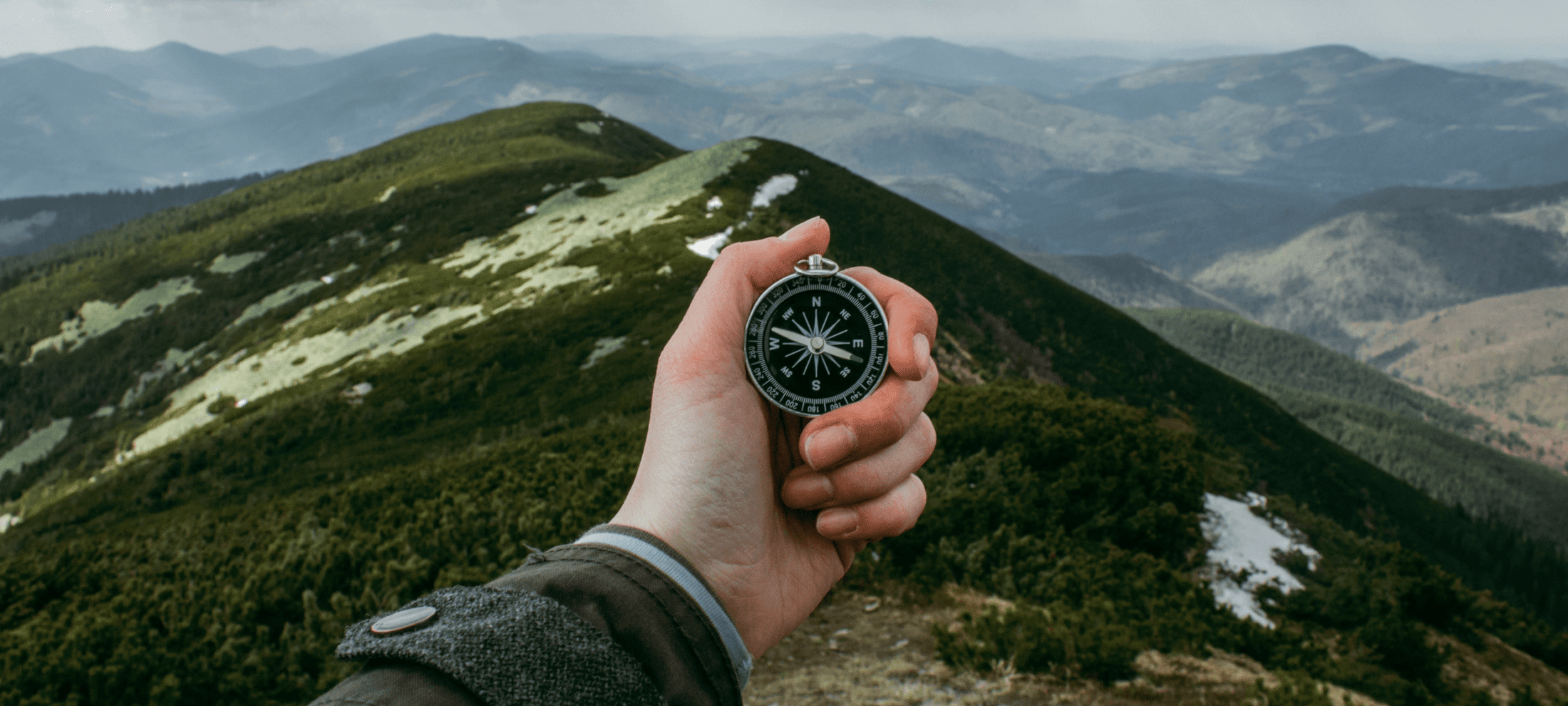The cost of curiosity: On the ethics of innovation

The cost of curiosity: On the ethics of innovation
Opinion + AnalysisScience + Technology
BY Dr. Gwilym David Blunt 6 JUL 2023
The billionaire has become a ubiquitous part of life in the 21st century.
In the past many of the ultra-wealthy were content to influence politics behind the scenes in smoke-filled rooms or limit their public visibility to elite circles by using large donations to chisel their names onto galleries and museums. Today’s billionaires are not so discrete; they are more overtly influential in the world of politics, they engage in eye-catching projects such as space and deep-sea exploration, and have large, almost cult-like, followings on social media.
Underpinning the rise of this breed of billionaire is the notion that there is something special about the ultra-wealthy. That in ‘winning’ capitalism they have demonstrated not merely business acumen, but a genius that applies to the human condition more broadly. This ‘epistemic privilege’ casts them as innovators whose curiosity will bring benefits to the rest of us and the best thing that we normal people can do is watch on from a distance. This attitude is embodied in the ‘Silicon Valley Libertarianism’ which seeks to liberate technology from the shackles imposed on it by small-minded mediocrities such as regulation. This new breed seeks great power without much interest in checks on the corresponding responsibility.
Is this OK? Curiosity, whether about the physical world or the world of ideas, seems an uncontroversial virtue. Curiosity is the engine of progress in science and industry as well as in society. But curiosity has more than an instrumental value. Recently, Lewis Ross, a philosopher at the London School of Economics, has argued that curiosity is valuable in itself regardless of whether it reliably produces results, because it shows an appreciation of ‘epistemic goods’ or knowledge.
We recognise curiosity as an important element of a good human life. Yet, it can sometimes mask behaviour we ought to find troubling.
Hubris obviously comes to mind. Curiosity coupled with an outsized sense of one’s capabilities can lead to disaster. Take Stockton Rush, for example, the CEO of OceanGate and the author of the tragic sinking of the Titan submarine. He was quoted as saying: “I’d like to be remembered as an innovator. I think it was General MacArthur who said, ‘You’re remembered for the rules you break’, and I’ve broken some rules to make this. I think I’ve broken them with logic and good engineering behind me.” The result was the deaths of five people.
While hubris is a foible on a human scale, the actions of individuals cannot be seen in isolation from the broader social contexts and system. Think, for example, of the interplay between exploration and empire. It is no coincidence that many of those dubbed ‘great explorers’, from Columbus to Cook, were agents for spreading power and domination. In the train of exploration came the dispossession and exploitation of indigenous peoples across the globe.
A similar point could be made about advances in technology. The industrial revolution was astonishing in its unshackling of the productive potential of humanity, but it also involved the brutal exploitation of working people. Curiosity and innovation need to be careful of the company they keep. Billionaires may drive innovation, but innovation is never without a cost and we must ask who should bear the burden when new technology pulls apart the ties that bind.
Yet, even if we set aside issues of direct harm, problems remain. Billionaires drive innovation in a way that shapes what John Rawls called the ‘basic structure of society’. I recently wrote an article for International Affairs giving the example of the power of the Bill and Melinda Gates Foundation in global health. Since its inception the Gates Foundation has become a key player in global health. It has used its considerable financial and social power to set the agenda for global health, but more importantly it has shaped the environment in which global health research occurs. Bill Gates is a noted advocate of ‘creative capitalism’ and views the market as the best driver for innovation. The Gates Foundation doesn’t just pick the type of health interventions it believes to be worth funding, but shapes the way in which curiosity is harnessed in this hugely important field.
This might seem innocuous, but it isn’t. It is an exercise of power. You don’t have to be Michel Foucault to appreciate that knowledge and power are deeply entwined. The way in which Gates and other philanthrocapitalists shape research naturalises their perspective. It shapes curiosity itself. The risk is that in doing so, other approaches to global health get drowned out by focussing on hi-tech market driven interventions favoured by Gates.
The ‘law of the instrument’ comes to mind: if the only tool you have is a hammer, it is tempting to treat everything as if it were a nail. By placing so much faith in the epistemic privilege of billionaires, we are causing a proliferation of hammers across the various problems of the world. Don’t get me wrong, there is a place for hammers, they are very useful tools. However, at the risk of wearing this metaphor out, sometimes you need a screwdriver.
Billionaires may be gifted people, but they are still only people. They ought not to be worshipped as infallible oracles of progress, to be left unchecked. To do so exposes the rest of us to the risk of making a world where problems are seen only through the lens created by the ultra-wealthy – and the harms caused by innovation risk being dismissed merely as the cost of doing business.
Ethics in your inbox.
Get the latest inspiration, intelligence, events & more.
By signing up you agree to our privacy policy
You might be interested in…
Opinion + Analysis
Relationships, Science + Technology
Age of the machines: Do algorithms spell doom for humanity?
Opinion + Analysis
Business + Leadership, Science + Technology
Is it ok to use data for good?
Opinion + Analysis
Business + Leadership, Science + Technology
Finance businesses need to start using AI. But it must be done ethically
Opinion + Analysis
Science + Technology
We can raise children who think before they prompt
BY Dr. Gwilym David Blunt
Dr. Gwilym David Blunt is a Fellow of the Ethics Centre, Lecturer in International Relations at the University of Sydney, and Senior Research Fellow of the Centre for International Policy Studies. He has held appointments at the University of Cambridge and City, University of London. His research focuses on theories of justice, global inequality, and ethics in a non-ideal world.
If politicians can’t call out corruption, the virus has infected the entire body politic

If politicians can’t call out corruption, the virus has infected the entire body politic
Opinion + AnalysisPolitics + Human Rights
BY Simon Longstaff 3 JUL 2023
Nothing can or should diminish the good done by Gladys Berejiklian. And nothing can or should diminish the bad. One does not cancel the other. Both are true. Both should be acknowledged for what they are.
Yet, in the wake of Independent Commission Against Corruption’s finding that the former premier engaged in serious corrupt conduct, her political opponent, Premier Chris Minns, has refused to condemn the conduct that gave rise to this finding. Other politicians have gone further, putting personal and political allegiance ahead of sound principle to promote a narrative of denial and deflection.
Political corruption is like a highly contagious virus that infects the cells of the brain. It tends to target people who believe their superior virtue makes them immune to its effects. It protects itself from detection by convincing its hosts that they are in perfect ethical health, that the good they do outweighs the harm corruption causes, that noble intentions excuse dishonesty and that corruption only “counts” when it amounts to criminal conduct.
By any measure, Berejiklian was a good premier. Her achievements deserve to be celebrated. I am also certain that she is, at heart, a decent person who sincerely believes she always acted in the best interests of the people of NSW. By such means, corruption remains hidden – perhaps even from the infected person and those who surround them.
In painstaking legal and factual detail, those parts of the ICAC report dealing with Berejiklian reveal a person who sabotaged her own brilliant career, not least by refusing to avail herself of the protective measures built into the NSW Ministerial Code of Conduct. The code deals explicitly with conflicts of interest. In the case of a premier, it requires that a conflict be disclosed to other cabinet ministers so they can determine how best to manage the situation.
The code is designed to protect the public interest. However, it also offers protection to a conflicted minister. Yet, in violation of her duty and contrary to the public interest, Berejiklian chose not to declare her obvious conflict.
At the height of the COVID pandemic, did we excuse a person who, knowing themselves to be infected by the virus, continued to spread the disease because they were “a good person” doing ‘a good job’? Did we turn a blind eye to their disregard for public health standards just because they thought they knew better than anyone else? Did it matter that wilfully exposing others to risk was not a criminal offence? Of course not. They were denounced – not least by the leading politicians of the day.
But in the case of Berejiklian, what we hear in reply is the voice of corruption itself – the desire to excuse, to diminish, to deflect. Those who speak in its name may not even realise they do so. That is how insidious its influence tends to be. Its aim is to normalise deviance, to condition all whom it touches to think the indefensible is a mere trifle.
This is especially dangerous in a democracy. When our political leaders downplay conflicts of interest in the allocation of public resources, they reinforce the public perception that politicians cannot be trusted to use public power and resources solely in the public interest.
Our whole society, our economy, our future rest on the quality of our ethical infrastructure. It is this that builds and sustains trust. It is trust that allows society to be bold enough to take risks in the hope of a better future. We invest billions building physical and technical infrastructure. We invest relatively little in our ethical infrastructure. And so trust is allowed to decay. Nothing good can come of this.
When our ethical foundations are treated as an optional extra to be neglected and left to rot, then we are all the poorer for it.
What Gladys Berejiklian did is now in the past. What worries me is the uneven nature of the present response. Good people can make mistakes. Even the best of us can become the authors of bad deeds. But understanding the reality of human frailty justifies neither equivocation nor denial when the virus of corruption has infected the body politic.
This article was originally published in The Sydney Morning Herald.
Ethics in your inbox.
Get the latest inspiration, intelligence, events & more.
By signing up you agree to our privacy policy
You might be interested in…
Explainer
Business + Leadership, Politics + Human Rights
Ethics Explainer: Universal Basic Income
Opinion + Analysis
Business + Leadership, Politics + Human Rights, Relationships
After Christchurch
Opinion + Analysis
Politics + Human Rights, Relationships, Society + Culture
You won’t be able to tell whether Depp or Heard are lying by watching their faces
Opinion + Analysis
Politics + Human Rights, Relationships, Society + Culture
In the face of such generosity, how can racism still exist?
BY Simon Longstaff
Simon Longstaff began his working life on Groote Eylandt in the Northern Territory of Australia. He is proud of his kinship ties to the Anindilyakwa people. After a period studying law in Sydney and teaching in Tasmania, he pursued postgraduate studies as a Member of Magdalene College, Cambridge. In 1991, Simon commenced his work as the first Executive Director of The Ethics Centre. In 2013, he was made an officer of the Order of Australia (AO) for “distinguished service to the community through the promotion of ethical standards in governance and business, to improving corporate responsibility, and to philosophy.” Simon is an Adjunct Professor of the Australian Graduate School of Management at UNSW, a Fellow of CPA Australia, the Royal Society of NSW and the Australian Risk Policy Institute.
Ethics explainer: Normativity

Have you ever spoken to someone and realised that they’re standing a little too close for comfort?
Personal space isn’t something we tend to actively think about; it’s usually an invisible and subconscious expectation or preference. However, when someone violates our expectations, they suddenly become very clear. If someone stands too close to you while talking, you might become uncomfortable or irritated. If a stranger sits right next to you in a public place when there are plenty of other seats, you might feel annoyed or confused.
That’s because personal space is an example of a norm. Norms are communal expectations that are taken up by various populations, usually serving shared values or principles, that direct us towards certain behaviours. For example, the norm of personal space is an expectation that looks different depending on where you are.
In some countries, the norm is to keep distance when talking to strangers, but very close when talking to close friends, family or partners. In other countries, everyone can be relatively close, and in others still, not even close relationships should invade your personal space. This is an example of a norm that we follow subconsciously.
We don’t tend to notice what our expectation even is until someone breaks it, at which point we might think they’re disrespecting personal or social boundaries.
Norms are an embodiment of a phenomenon called normativity, which refers to the tendency of humans and societies to regulate or evaluate human conduct. Normativity pervades our daily lives, influencing our decisions, behaviors, and societal structures. It encompasses a range of principles, standards, and values that guide human actions and shape our understanding of what’s considered right or wrong, good or bad.
Norms can be explicit or implicit, originating from various sources like cultural traditions, social institutions, religious beliefs, or philosophical frameworks. Often norms are implicit because they are unspoken expectations that people absorb as they experience the world around them.
Take, for example, the norms of handshakes, kisses, hugs, bows, and other forms of greeting. Depending on your country, time period, culture, age, and many other factors, some of these will be more common and expected than others. Regardless, though, each of them has a or function like showing respect, affection or familiarity.
While these might seem like trivial examples, norms have historically played a large role in more significant things, like oppression. Norms are effectively social pressures, so conformity is important to their effect – especially in places or times where the flouting of norms results in some kind of public or social rebuke.
So, norms can sometimes be to the detriment of people who don’t feel their preferences or values reflected in them, especially when conformity itself is a norm. One of the major changes in western liberal society has been the loosening of norms – the ability for people to live more authentically themselves.
Normative Ethics
Normativity is also an important aspect of ethical philosophy. Normative ethics is the philosophical inquiry into the nature of moral judgments and the principles that should govern human actions. It seeks to answer fundamental questions like “What should I do?”, “How should I live? and “Which norms should I follow?”. Normative ethical theories provide frameworks for evaluating the morality of specific actions or ethical dilemmas.
Some normative ethical theories include:
- Consequentialism, which says we should determine moral valued based on the consequences of actions.
- Deontology, which says we should determine moral value by looking at someone’s coherence with consistent duties or obligations.
- Virtue ethics, which focuses on alignment with various virtues (like honesty, courage, compassion, respect, etc.) with an emphasis on developing dispositions that cultivate these virtues.
- Contractualism, informed by the idea of the social contract, which says we should act in ways and for reasons that would be agreed to by all reasonable people in the same circumstances.
- Feminist ethics, or the ethics of care, which says that we should challenge the understand and challenge the way that gender has operated to inform historical ethical beliefs and how it still affects our moral practices today.
Normativity extends beyond individual actions and plays a significant role in shaping societal norms, as we saw earlier, but also laws and policies. They influence social expectations, moral codes, and legal frameworks, guiding collective behavior and fostering social cohesion. Sometimes, like in the case of traffic laws, social norms and laws work in a circular way, reinforcing each other.
However, our normative views aren’t static or unchangeable.
Over time, societal norms and values evolve, reflecting shifts in normative perspectives (cultural, social, and philosophical). Often, we see social norms culminating in the changing of outdated laws that accurately reflected the normative views of the time, but no longer do.
While it’s ethically significant that norms shift over time and adapt to their context, it’s important to note that these changes often happen slowly. Eventually, changes in norms influence changes in laws, and this can often happen even more slowly, as we have seen with homosexuality laws around the world.
Ethics in your inbox.
Get the latest inspiration, intelligence, events & more.
By signing up you agree to our privacy policy
You might be interested in…
Opinion + Analysis
Relationships
Why listening to people we disagree with can expand our worldview
Big thinker
Politics + Human Rights, Relationships
Big Thinker: Dennis Altman
Big thinker
Relationships, Society + Culture
Five Australian female thinkers who have impacted our world
Explainer
Relationships
Ethics explainer: The principle of charity
BY The Ethics Centre
The Ethics Centre is a not-for-profit organisation developing innovative programs, services and experiences, designed to bring ethics to the centre of professional and personal life.
The ethics of drug injecting rooms

The ethics of drug injecting rooms
Opinion + AnalysisHealth + WellbeingScience + Technology
BY Zach Wilkinson 28 JUN 2023
Should we allow people to use illicit drugs if it means that we can reduce the harm they cause? Or is doing so just promoting bad behaviour?
Illicit drug use costs the Australian economy billions of dollars each year, not to mention the associated social and health costs that it imposes on individuals and communities. For the last several decades, the policy focus has been on reducing illicit drug use, including making it illegal to possess and consume many drugs.
Yet Australia’s response to illicit drug use is becoming increasingly aligned with the approach called ‘harm reduction,’ which includes initiatives like supervised injecting rooms and drug checking services, like pill testing.
Harm reduction initiatives effectively suspend the illegality of drug possession in certain spaces to prioritise the safety and wellbeing of people who use drugs. Supervised injecting rooms allow people to bring in their illicit drugs, acquire clean injecting equipment and receive guidance from medical professionals. Similarly, pill testing creates a space for festival-goers to learn about the contents and potency of their drugs, tacitly accepting that they will be consumed.
Harm reduction is best understood in contrast with an abstinence-based approach, which has the goal of ceasing drug use altogether. Harm reduction does not enforce abstinence, instead focusing on reducing the adverse events that can result from unsafe drug use such as overdose, death and disease.
Yet there is a great deal of debate around the ethics of harm reduction, with some people seeing it as being the obvious way to minimise the impact of drug use and to help addicts battle dependence, while those who favour abstinence often consider it to be unethical in principle.
Much of the debate is muddied by the fact that those who embrace one ethical perspective often fail to understand the issue from the other perspective, resulting in both sides talking past each other. In order for us to make an informed and ethical choice about harm reduction, it’s important to understand both perspectives.
The ethics of drug use
Deontology and consequentialism are two moral theories that inform the various views around drug use. Deontology focuses on what kinds of acts are right or wrong, judging them according to moral norms or whether they accord with things like duties and human rights.
Immanuel Kant famously argued that we should only act in ways that we would wish to become universal laws. Accordingly, if you think it’s okay to take drugs in one context, then you’re effectively endorsing drug use for everyone. So a deontologist might argue that people should not be allowed to use illicit drugs in supervised injecting rooms, because we would not want to allow drug use in all spaces.
An abstinence-based approach embodies this reasoning in its focus on stopping illicit drug use through treatment and incarceration. It can also explain the concern that condoning drug use in certain spaces sends a bad message to the wider community, as argued by John Barilaro in the Sydney Morning Herald:
“…it’d be your taxpayer dollars spent funding a pill-testing regime designed to give your loved ones and their friends the green light to take an illicit substance at a music festival, but not anywhere else. If we’re to tackle the scourge of drugs in our regional towns and cities, we need one consistent message.”
However, deontology can also be inflexible when it comes to dealing with different circumstances or contexts. Abstinence-based approaches can apply the same norms to long-term drug uses as it does to teenagers who have not yet engaged in illicit drug use. With still high rates of morbidity and mortality for the former group, some may prefer an alternative approach that highlights this context and these consequences in its moral reasoning.
Harms and benefits
Enter consequentialism, which judges good and bad in terms of the outcomes of our actions. Harm reduction is strongly informed by consequentialism in asserting that the safety and wellbeing of people who use drugs are of primary concern. Whether drug use should be allowed in a particular space is answered by whether things like death, overdose and disease are expected to increase or decrease as a result. This is why scientific evaluations play an important role in harm reduction advocacy. As Stephen Bright argued in The Conversation:
“…safe injecting facilities around the world: ’have been found to reduce the number of fatal and non-fatal drug overdoses and the spread of blood borne viral infections (including HIV and hepatitis B and C) both among people who inject drugs and in the wider community.’”
This approach also considers other potential societal harms, such as public injections and improper disposal of needles, as well as burden on the health system, crime and satisfaction in the surrounding community.
This focus on consequences can also lead to the moral endorsement of some counter-intuitive initiatives. Because a consequentialist perspective will look at a wide range of the outcomes associated with a program, including the cost and harms caused by criminalisation, such as policing and incarceration, it can also conclude that some dangerous drugs should be decriminalised or legalised, if doing so would reduce their overall harm.
While a useful way to begin thinking about Australia’s approach to drug use, there is of course nuance worth noting. A deontological abstinence-based approach assumes that establishing a drug-free society is even possible, which is highly contested by harm reduction advocates. Disagreement on this possibility seems to reflect intuitive beliefs about people and about drugs. This is perhaps part of why discussions surrounding harm reduction initiatives often become so polarised. Nevertheless, these two moral theories can help us begin to understand how people view quite different dimensions of drug treatment and policy as ethically important.
Ethics in your inbox.
Get the latest inspiration, intelligence, events & more.
By signing up you agree to our privacy policy
You might be interested in…
Opinion + Analysis
Health + Wellbeing, Business + Leadership
The ethics of workplace drinks, when we’re collectively drinking less
Opinion + Analysis
Health + Wellbeing, Relationships
Send in the clowns: The ethics of comedy
Opinion + Analysis
Health + Wellbeing, Relationships
How to deal with people who aren’t doing their bit to flatten the curve
Opinion + Analysis
Health + Wellbeing, Relationships
The ethics of smacking children
BY Zach Wilkinson
Zach is currently in the public health field researching and writing on illicit drugs against a backdrop of academic philosophy, psychology and the broader health sciences by way of USYD and UNSW.
License to misbehave: The ethics of virtual gaming

License to misbehave: The ethics of virtual gaming
Opinion + AnalysisScience + Technology
BY Kara Jensen-Mackinnon 20 JUN 2023
Gaming was once just Pacman chasing pixelated ghosts through a digital darkness but, now, as we tumble headlong into virtual realities, ethical voids are being filled by the same ghosts humanity created IRL.
As a kid I sank an embarrassing amount of time into World of Warcraft online, my elven ranger was named Vereesa Windrunner and rode a silver covenant hippogryph. (Tl;dr: I was a cool chick with a bow and arrow and a flying horse.)
Once I came across two other players and we chatted – then they attacked, took all my things and left me for dead. I was mad because walking back to the nearest town without my trusty hippogryph would take a good half hour.
Gamers call this behaviour “griefing”; using the game in unintended ways to destroy or steal things another player values – even when that is not the objective. It’s pointless, it’s petty, in other words it’s being a huge jerk online.
The only way to cope with that big old dose of griefing was rolling back from my screen, turning off the console and making a cup of tea.
But gaming is changing and virtual reality means logging off won’t be so simple – as exciting and daunting as that sounds.
500 years ago, or whenever Pacman was invented, gaming largely amounted to you being a little dot moving around the screen, eating slightly smaller dots, and avoiding slightly larger dots.
Game developers have endlessly fought to create more realistic, more immersive, and more genuine experiences ever since.
Gaming now stands as its own art, even inspiring seriously good television (try not to cry watching Last of Us) – and the long awaited leap into convincing, powerful VR (virtual reality) is now upon us.
But in gaming’s few short decades we have already begun to realise the ethical dilemmas that come with a digital avatar – and the new griefing is downright criminal.
Last year’s Dispatches investigation found virtual spaces were already rife with hate speech, sexual harassment, paedophilia, and avatars simulating sex in spaces accessible to children.
In the Metaverse also – which Mark Zuckerberg hopes we will all inhabit – people allege they were groped and abused, sexually harrassed and assaulted.
In one shocking experience a woman even claimed she was “virtually gang raped” while in the Metaverse.
So how can we better prepare for the ethical problems we are going to encounter as more people enter this brave new world of VR gaming? How will the lines between fantasy and reality blur when we find ourselves truly positioned in a game? What does “griefing” become in a world where our online avatars and real lives overlap? And why should we trust the creepy tech billionaires who are crafting this world with our safety and security?
The Ethics Centre’s Senior Philosopher and avid gamer Dr Tim Dean spent his formative years playing (and being griefed) in the game, Ultima Online – so he’s just the right person to ask.
Let the games begin
VR still requires cumbersome headsets. The most well known, which was bought by Facebook, is called Oculus but there are others.
Once you’re strapped in, you can turn your head left and right and you see the expansive computer generated landscape stretching out before you.
Your hands are the fiery gauntlets of a wizard, your feet their armoured boots, you might have more rippling abs than you’re used to – but you get the point, you’re seeing what your character sees.
The space between yourself and your avatar quickly closes.
Tim says, there is that kind of “verisimilitude” which feels like you’re right there – for better or for worse.
“If you have a greater sense of identity with your avatar, it magnifies the feelings of violation,” he said.
Videogames were once an escape from reality, a way to unshackle to the point you can steal a car, rob a bank and even kill, but Dean suggests this escapism creates new moral quandaries once we become our characters.
“A fantasy can give you an opportunity to get some satisfaction where you might not otherwise have,” he said.
“But also, if your desires are unhealthy – if you want to be violent, if you want to take things from people, if you enjoy experiencing other people’s suffering – then a fantasy can also allow you to play that out.”
Make your own rules
Dean has hope, despite the grim headlines, saying “norms emerge” in these virtual moral voids and norms begin to form between users – or as they used to be called; “people”.
“Where there are no explicit top down norms that prevent people from harming or griefing other people, sometimes bottom up community norms emerge,” he said.
Dean’s PhD is about the birth of norms: the path from a lawless, warring chaos to self-regulating society because humans learned about the impacts they were having on one another.
It sounds promising, but when Metaverse headsets begin at $1500 you’ll quickly realise the gates to the future open only to the privileged, often wealthy white men become the early adopters.
Mark Zuckerberg seems to have the same concerns.
Metaverse proposed a solution in the form of a virtual “personal bubble” to protect people from groping… but aside from feeling very lame to walk around in a big safety bubble, it demonstrates that there’s no attempt to curb the bad behaviour in the first place.
The solution, in the real world, to combat abuse has typically come in the form of including people from diverse backgrounds, more women, more people of colour, all sharing in the power structure.
For virtual reality – now is the time to have that discussion, not after everyone has a horror story.
Dean thinks there are a few big questions yet to be answered:
Will people, en masse, act horribly in the virtual world?
How do you change behaviour in that world without imposing oppressive rules or… bubbles? Who gets to decide what those rules are? Would we be happy with the rules Meta comes up with? At least in a democracy, we have some power to choose who makes up the rules. That’s not the case with most technology companies.
And how does behaviour in the virtual world translate to our behaviour outside of the virtual world?
Early geeks hoped the internet would be a virtual town square with people sharing ideas – a vision that missed racist chatbots, revenge porn and swatting.
Dean hopes the VR landscape might offer a clean slate, a chance at least to learn from the past and increase people’s capacity for empathy.
“We can literally put on goggles and walk a mile in someone else’s shoes,” he said.
So maybe there’s hope yet.
Ethics in your inbox.
Get the latest inspiration, intelligence, events & more.
By signing up you agree to our privacy policy
You might be interested in…
Opinion + Analysis
Relationships, Science + Technology
If humans bully robots there will be dire consequences
Opinion + Analysis
Business + Leadership, Relationships, Science + Technology
Are we ready for the world to come?
Opinion + Analysis
Business + Leadership, Politics + Human Rights, Science + Technology
Not too late: regaining control of your data
Explainer
Science + Technology
Ethics Explainer: The Turing Test
BY Kara Jensen-Mackinnon
Kara Jensen-Mackinnon is an award winning creative producer and journalist, she currently works at the 7am podcast, and has created podcasts for The Guardian, ABC RN, The Sydney Opera House, The Sydney Festival and the UN World Food Program.
The new normal: The ethical equivalence of cisgender and transgender identities

The new normal: The ethical equivalence of cisgender and transgender identities
Opinion + AnalysisRelationships
BY Louise Richardson-Self 14 JUN 2023
We’ve witnessed some pretty shocking hostility, anger, and violence directed towards the trans community recently, from anti-transgender rights activist Kellie-Jay Keen-Minshull’s national speaking tour, to an attack on LGBTQIA+ peaceful protestors by far-right Christian men.
This hostility isn’t new. Recall the former Warringah candidate Katherine Deves derogatorily described Trans and Gender Diverse (TGD) people as “surgically mutilated and sterilised”. Or that gender dysphoria was described as a “social contagion” at a Gender Identity in Law forum at Hobart’s Town Hall, and there was lament that “women and girls would miss out on opportunities to reach elite levels” in professional sport.
It is no secret that transgender women, in particular, are at the forefront of the public discourse around trans rights, and worldwide the slogan “trans women are women” has been catching on. But there is still resistance when certain collectives retort that “women” just are “adult human females”.
What drives these clashes is divergence over the metaphysics of sex and gender: what is ‘sex’, really? What is ‘gender’, really? The way we answer these questions shapes our estimation of which people can belong to which group, how people can behave, and in what ways society should recognise our identities.
Some people think the relationship from sex to gender is straightforward: male sex = man, female sex = woman. But others think that their relationship is more complicated and unpredictable. People might be assigned female at birth but develop a transmasculine gender identity. That person is transgender, and many believe it is both polite and metaphysically accurate to identify these people as men. Likewise, a person assigned male at birth could develop a transfeminine gender identity, and it is appropriate to identify her as a woman.
If this is what you think about sex and gender, then you believe that gender does not reduce to sex. Your view of gender is ‘trans inclusive’.
Enter ‘cisgender’
To help us better articulate the gendered positions that are available to us, in the 1990s trans activists coined the term ‘cisgender’, or ‘cis’ for short referring to people whose gender identity and expression matches the biological sex they were assigned when they were born. Although ‘cisgender’ has been around a long time, it only went ‘mainstream’ pretty recently, being added to the Oxford English Dictionary only in 2015.
I’ve come to believe that cisgender is an ethically necessary concept. And, speaking personally, it is a concept that also allows me to better understand myself and how we can be more inclusive of others.
As B. Aultman explains, “The terms man and woman, left unmarked, tend to normalise cisness — reinforcing the unstated ‘naturalness’ of being cisgender. Using the identifications of ‘cis man’ or ‘cis woman’, alongside the usage of ‘transman’ and ‘transwoman’, resists that norm reproduction and the marginalisation of trans people that such norms effect.”
Putting the point another way, being non-trans is a common, not normal self-expression. Simultaneously, being trans is an uncommon, but nonetheless normal expression. Introducing a positive marker of nontrans identity through the term ‘cisgender’ can have a really important social impact: it can help to destigmatise being trans.
For this reason, ‘cis’ is not just a label for me; it’s meaningful. It allows me to make sense of myself, my experiences, and my social surrounds in a deeply existential way.
Embodied identity
I was raised on a diet of feminist materialism, or ‘difference feminism’, so how I see my self — my own being — is thoroughly embodied; the self is, first and foremost, fundamentally corporeal. But there is no simple line from embodied experience to social identity. All identities are socially constructed to an extent; we don’t decide who we are on our own but do so in response to how other people perceive and interact with us within a rich and layered social environment. And all subjectivity has its basis in the flesh, by virtue of us being embodied creatures.
I believe it is perfectly plausible to acknowledge that different women have different bodies (whether assigned female at birth or not), and so will have qualitatively distinct experiences of being women.
Let me offer some examples, I have always been acutely aware that, because I look the way that I do, because I (appear to) have a certain body, I am treated differently to cisgender men. When I was growing up, people would sexually objectify me. This is something that I share with some, but not all cisgender women, and some, but not all transgender women. I have been harassed because I am a cisgender woman, and a trans woman is harassed because she is a trans woman. Our stories may have similarities, but they will also have distinctiveness.
Today, I spend most of my time dealing with sex-specific chronic pain and the associated medical sexism that goes with the territory. Since this type of pain (endometriosis and adenomyosis) is registered as “women’s pain” in our collective consciousness, the recognition that I am a cisgender woman is significant. It’s easy to comprehend that a transgender man would have a qualitatively distinct experience when he seeks healthcare for his endometriosis.
It is imperative to acknowledge that there are certainly some structural privileges shared by both cis men and women. Acknowledging that we are cis is the first step in owning that privilege. However, the fact remains that cis women stand in a relation of oppression and privilege in relation to cis men, which is to say that, like trans women, cis women are oppressed because of their sex-gender configuration too, whereas cis men are not.
Talking about myself as a ‘cis woman’, thinking of myself as a ‘cis woman’, keeps this rich complexity front and centre as I navigate my day-to-day life.
Owning our gender
So what are the implications of this? Must we always use a prefix (‘cis’ or ‘trans’)? Do we need to make structural or institutional changes? And should all non-trans people recognise themselves as ‘cisgender’?
We don’t always need a prefix. Say you want to compare the average earnings of women to the average earnings of men. In this instance, there is no need to distinguish between trans women and men, and cis women and men. Or, say you want to tally the members of a political party by gender; again, there is no reason to distinguish the trans members from the cis members. Whether we need a prefix is context-dependent.
Let’s say you’re filling out an admission form for an in-patient stay in hospital. Hospitals are the sorts of places where both your sex and gender identity need to be foregrounded. That form could say, “What is your gender: Man; Woman; Other” and “What was your sex-assignment at birth: Male; Female; Other”. But that form could also say: “What is your gender identity: cisgender man; cisgender woman; trans man; trans woman; other”. It doesn’t really matter, so long as the hospital can obtain the information it needs.
But do you have to identify as cis? In my experience, taking up the label in a self-recognitive way helps to decentre the view that trans people are somehow abnormal. I think that’s a good reason, especially in light of the stigma and violence confronting trans people today. I have found value in it – it helps me to understand my own struggles and reminds me not to universalise my experiences.
This article is part of our Why identity matters series.
Ethics in your inbox.
Get the latest inspiration, intelligence, events & more.
By signing up you agree to our privacy policy
You might be interested in…
Big thinker
Relationships
Big Thinker: Plato
Opinion + Analysis
Politics + Human Rights, Relationships
Standing up against discrimination
Opinion + Analysis
Relationships
What I now know about the ethics of fucking up
Opinion + Analysis
Politics + Human Rights, Relationships
Is it wrong to care about Ukraine more than other wars?
BY Louise Richardson-Self
Louise Richardson-Self is a Lecturer in Philosophy and Gender Studies at the University of Tasmania and an Australian Research Council Discovery Early Career Researcher Awardee (2019). Her current research focuses are the problem online hate speech, and the tension between LGBT+ non-discrimination and religious freedom. She is the author of Justifying Same-Sex Marriage: A Philosophical Investigation (2015) and her second book, Hate Speech Against Women Online: Concepts and Countermeasures is due for publication in 2021.
The Bare Pit 2023 LIVESTREAM

BEING HUMAN Article
Friday 16 June 2023
1pm – 2pm AEST
NSW Parliament House
and livestream
Free, registration essential
Livestream
Back by popular demand, The Ethics Centre in association with the Parliament of NSW goes beyond the stoush with The Bare Pit: In Victory and Defeat.
You are invited to sit in the chamber alongside a panel of current MPs and ex-parliamentarians from all sides, as they lay bare their perspectives, cracking open the human dimension of politics, exploring the pertinent topic “In Victory and Defeat”.
Hear rare personal insights into how it feels to slog hard and fall short; succeed and remain gracious; endure personal sacrifices; and remain ethical when the idea that ‘the ends justify the means’ can be so enticing – all while being in the public eye.
Your host, The Ethics Centre’s Dr Simon Longstaff AO, will encourage the speakers to be candid as he leads them through a range of scenarios where these dynamics play out: at election time, in the party room, in cabinet and more.
Guests include Greens Member of the NSW Legislative Council, Cate Faehrmann MLC; the Minister for Finance and Natural Resources, The Hon. Courtney Houssos MLC; Shadow Minister for Health, Matt Kean MP; former Speaker of the Legislative Assembly, The Hon. Jonathan O’Dea; and NSW State Political Reporter, Ashleigh Raper.
About The Bare Pit
The name of this event, The Bare Pit is a pun on ‘bear pit’, a well-known colloquial term for the Legislative Assembly chamber, in the past often synonymous with bravado and a combative style of debate. In this take, panellists from all sides of politics appear together to unpack preconceptions of Parliamentary behaviour, as they lay ‘bare’ their own experiences.
The Bare Pit is a unique collaboration between The Ethics Centre and the Parliament of NSW, giving audiences unfiltered access to the workings of Parliament in this free event, offered both in person and livestreamed.
Presented in association with the Parliament of NSW

Things to think about
Nothing found.
Who are you? Why identity matters to ethics

Who are you? Why identity matters to ethics
Opinion + AnalysisRelationships
BY Dr Tim Dean 13 JUN 2023
A cornerstone of ethics is our fundamental human need to be recognised for who we are and who we want to be.
When I was on the cusp of my teenage years, I discovered who I was. At least, I thought I did. For a middle-class white kid growing up on the north shore of Sydney in the late 1980s, I was surrounded by a homogeneous sameness to which I only belonged by default.
I didn’t feel any strong connection to the dominant Anglo-Australian culture: I didn’t go to church; I didn’t participate in that other religion, sport; and I only begrudgingly watched Hey Hey It’s Saturday. There was nothing there that spoke to my desire to have some grounding that could tell me who I was, what made me different.
And then I saw it, a documentary series produced by the BBC on the Celtic peoples. Despite my rather trivial genealogical association with the Celts – my ancestors originated from across the British Isles – I entirely lacked any cultural connection. Yet I had an overwhelming sense that these were ‘my people,’ and that I could connect myself to their history and culture, and share in their pride and tragedy.
I hastily bought a Celtic cross pendant. I read folk tales of Lugh of the Long Arm and the Tuatha Dé Danann. And, most pretentiously, I started correcting people about my ethnicity, identifying not as Australian or Anglo, but as a proud Celt. I was insufferable.
But this connection to a people and a culture stirred something within me. It satisfied a deep need to belong to something larger than myself, yet it was also something that set me apart from those around me. It gave me an identity.
A few years later, when I was on the cusp of adulthood, I lost that Celtic cross in a field somewhere in Byron Bay, and the cringe that I felt about replacing it forced me to revisit my appropriated identity and ask whether this was really me. It prompted me to reflect on who I was and who I wanted to be, and sparked a journey to build a new identity – a journey that is ongoing.
Identity crisis
Herein lies one of the great challenges of the modern world. Unlike our ancestors, who knew exactly who they were by virtue of the communities they were born (and died) in, the postmodern condition is that our identity is not handed to us: it’s left for us to discover – or to create.
This is both liberating and a curse. It’s liberating because our ancestors had little power to challenge their identity, especially if it ran against the current of their cultural norms. Their free ticket to belong came with no refunds.
The postmodern condition is a curse because we’re effectively dropped into the most diverse, fragmented and generally anxiety-inducing cultural morass in the long history of our species, and left to figure out how to piece together an identity without even a pamphlet to instruct us on how to do so.
Adding to the challenge is the existence of countless religions, corporations, sub-cultures, grifters, conspiracy theorists and self-help book authors who are only too eager to recruit you into their ranks, whether it’s to your benefit or not.
Yet build an identity we must. We are perhaps unique among the animals for having a reflective sense of who we are. We tell ourselves stories about ourselves, and these stories recursively influence who we are. Despite thinkers from the Buddha to David Hume arguing – quite persuasively, in my opinion – that there is no stable ‘self’ at the core of our identity, it’s almost impossible to live without some narrative that explains who we are and directs us towards who we want to be.
The ethics of recognition
Our identity doesn’t just play a descriptive role, explaining who we are, it plays a normative role too. It’s the seat of our dignity, the home of our values and defines what, and who, we stand for.
This is why identity is of central importance to ethics. Indeed, some thinkers, such as Georg Hegel, and Francis Fukuyama after him, have argued that a key feature of ethics is a fundamental desire for recognition. Both draw on the Ancient Greek concept of thymos, a term borrowed from Plato, which represents the spirited part of human nature that seeks recognition of its dignity.
They argue that our desire to be recognised as authentic human beings, with desires, values, rights and an inherent sense of pride based on the identity we choose for ourselves, is one of the driving forces of history, not least politics. Fukuyama famously argued that the arc of history bent towards liberal democracy, rather than any other political ideology, because it best satisfies our desire for recognition.
Yet our desire for recognition is not limited to our personal identity; it also applies to our group identities. This is behind the rise of so-called ‘identity politics,’ where individuals vote on behalf of the groups to which they belong rather than purely for their own self-interest. After all, you can’t truly understand who someone is without also understanding all the groups to which they belong.
Identity is powerful, which is why The Ethics Centre is exploring its ethical dimensions in this special series of articles. We’ve invited philosophers and commentators to tease out how identity influences our ethical views, looking at how the search for recognition is shaping the modern world and how it’s proving to be a liberating force but also a stifling one. We’ll be examining issues across politics race, culture, gender, sexual identity, and more.
We don’t assume we’ll be able to solve these issues here, but what we can do is help reveal how so many of the seemingly disparate ethical challenges of our time are grounded in one driving force: our desire to know ourselves.
This article is part of our Why identity matters series.
Ethics in your inbox.
Get the latest inspiration, intelligence, events & more.
By signing up you agree to our privacy policy
You might be interested in…
Opinion + Analysis
Relationships, Society + Culture
What does love look like? The genocidal “romance” of Killers of the Flower Moon
Opinion + Analysis
Relationships
Power and the social network
Opinion + Analysis
Business + Leadership, Relationships
Employee activism is forcing business to adapt quickly
Opinion + Analysis
Relationships
Want men to stop hitting women? Stop talking about “real men”
BY Dr Tim Dean
Dr Tim Dean is Philosopher in Residence at The Ethics Centre and author of How We Became Human: And Why We Need to Change.
Self-interest versus public good: The untold damage the PwC scandal has done to the professions

Self-interest versus public good: The untold damage the PwC scandal has done to the professions
Opinion + AnalysisBusiness + Leadership
BY Simon Longstaff 7 JUN 2023
The unfolding PwC scandal could be considered nothing more than an especially egregious example of ethical failure with dire consequences.
However, there are deeper issues to be examined. The most obvious concerns the proper role of the Australian Public Service, and whether or not efforts by successive governments to hollow it out have caused damage that will take a generation to repair. Less obvious is the damage done to an essential component of Australia’s ethical infrastructure: the professions.
Australian governments have long been captivated by physical and technical infrastructure. Few politicians can resist the opportunity to don a hard hat and hi-vis vest when announcing new investment in road, rail, bridge and dam projects. There is equal pride in initiatives including the National Broadband Network, quantum computing and improved cybersecurity.
Unfortunately, there is little interest in the ethical “infrastructure” that determines the extent of public trust in major public- and private-sector institutions. Without that trust, reform becomes almost impossible – or only after untimely delays and great cost.
As with physical and technical infrastructure, the quality of a nation’s ethical infrastructure has tangible effects on a nation’s economy. For example, Deloitte Access Economics has estimated that just a 10% improvement in ethics, across Australia, would generate an extra A$45 billion in GDP each year.
What is ethical infrastructure?
There are many components to this ethical infrastructure. However, one of the most important is the professions – whose members influence nearly every aspect of our lives. To understand their distinctive role, one needs to recognise the difference between two “worlds”: those of the market on one hand, and the professions on the other.
The essential character of the market was defined by Scottish economist and philosopher Adam Smith. It is a place where self-interested actors satisfy the wants of others. Smith prohibits lying, cheating or the oppressive use of power – as all harm the free market. Self-interested conduct is mediated by the so-called invisible hand, which Smith argues leads to an increase in the stock of common good. Indeed, that is the test any market must pass: does it, in practice, make us all better off?
The second world – the professions – is, in two respects, the opposite of the market. First, members of the professions do not satisfy the wants of others; they are obliged to serve the interests of others. For example, a diabetic might want to consume a large block of chocolate. The market will happily satisfy this want as long as the customer can pay the tariff. However, a doctor will refuse to provide the chocolate because it is not in the interests of their patient to do so.
Second, professionals are obliged to put aside self-interest in favour of the public good. For example, as officers of the court, lawyers are obliged to help in the administration of justice. This takes precedence over duties to the client and to the profession. Only after all other interests have been served may a lawyer look to their self-interest. The same holds for the members of every true profession.
In recognition of this practice, society enters into a social compact with the professions. It accords status, and gives them access to certain work that others may not do. It establishes privileges (such as the shield laws that protect journalists’ sources). The quality of the social compact waxes and wanes over time – but can exist only for as long as the professions honour their commitment to reject the logic of the market.
The importance of independence
It is the ethical foundations of the professions – in particular the putting aside of self-interest – that makes it possible for Australian governments to outsource public-sector functions to large, professional consulting firms such as PwC. After all, governments have an inalienable duty to act solely in the public interest. It is inconceivable they would turn over any of their functions to a self-interested entity. That would be to invite the fox into the hen house.
Central to each of the “Big Four” consulting firms is their auditing practice. Compared with consulting, auditing is a minnow in terms of revenue and influence. However, there lies the core of accounting’s professional ethos with its commitment to what is true and fair.
Auditors should be the quintessential professionals – independent and divorced from the ethos of the market. So, when an auditing firm, like PwC, works for government, it is assumed they can be trusted. Until they cannot.
What impact will PwC’s behaviour have on other professions?
We do not know the full extent of what happened at PwC. However, it seems likely that, at some point, some part of the firm abandoned the world of the professions in favour of the market – placing self-interest before all other considerations.
Now we are left to wonder. Was this just a small part of PwC, or has the rot infected larger parts of the company? If the professional ethos of PwC has been corrupted, how is this risk being managed in other, similar organisations?
Most troubling of all, can society still rely on the social compact it has struck with the professions more generally? Or has this once-vital piece of ethical infrastructure fallen into disrepair?
Whether you care about the quality of our society, or the economy, or the possibility of progress, you should care about the quality of our nation’s ethical infrastructure. It’s time to reinforce what remains so it’s not all lost, through neglect, cynicism or indifference, and to our considerable cost.
This article was originally published in The Conversation.
Ethics in your inbox.
Get the latest inspiration, intelligence, events & more.
By signing up you agree to our privacy policy
You might be interested in…
Opinion + Analysis
Business + Leadership, Society + Culture
Access to ethical advice is crucial
Opinion + Analysis
Business + Leadership, Relationships, Science + Technology
Are we ready for the world to come?
Opinion + Analysis
Business + Leadership
Is it fair to expect Australian banks to reimburse us if we’ve been scammed?
Opinion + Analysis
Business + Leadership
Is employee surveillance creepy or clever?
BY Simon Longstaff
Simon Longstaff began his working life on Groote Eylandt in the Northern Territory of Australia. He is proud of his kinship ties to the Anindilyakwa people. After a period studying law in Sydney and teaching in Tasmania, he pursued postgraduate studies as a Member of Magdalene College, Cambridge. In 1991, Simon commenced his work as the first Executive Director of The Ethics Centre. In 2013, he was made an officer of the Order of Australia (AO) for “distinguished service to the community through the promotion of ethical standards in governance and business, to improving corporate responsibility, and to philosophy.” Simon is an Adjunct Professor of the Australian Graduate School of Management at UNSW, a Fellow of CPA Australia, the Royal Society of NSW and the Australian Risk Policy Institute.
The future does not just happen. It is made. And we are its authors.

The future does not just happen. It is made. And we are its authors.
Opinion + AnalysisBusiness + LeadershipRelationships
BY Simon Longstaff 5 JUN 2023
Of late, I have been thinking about how to describe the impact of the work done by The Ethics Centre. It’s a surprisingly difficult thing to do because our greatest impact typically lies in our influence on what does NOT happen.
For example, when we assist or inspire a person to step back from making a disastrous decision, there is nothing to measure. We can measure the cost of disasters. We can measure the impact of the response to disasters. However, how do we measure the impact of a disaster averted?
Let’s consider this in a wider context. My abiding sense of today’s world is that we remain on the cusp of epoch-defining change. The sense of what is before us has led me back to binge-reading vast swathes of science fiction – and the worlds I encounter there are recognisably connected to our own. Yet, the unbounded power of the authors’ imagination invites the reader to be equally bold in contemplating ‘what might be’. Wondering about ‘what might be’ leads us to the realisation that we are each responsible, at least in part, for the future that actually emerges.
The future does not just happen. It is made. And we are its authors.
And that is why ethics matters. It is humanity’s best tool for the avoidance of disastrously bad decisions – and the nightmare worlds that emerge from them. More optimistically, ethics equips us to make brilliantly good decisions – and the wonderous possibilities that they entail.
We can see this at work in one topical example; the rise and rise of CHATGPT – the most famous of a growing suite of expert systems that already have the capacity to transform our lives. Predictably, there has been a slew of prophecies about the likelihood of both utopian and dystopian futures. The emergence of new technology is always accompanied by excessively optimistic and pessimistic views about its likely effects.
Less predictably, some of the architects of this technology have urged caution. Their call for a measure of self-restraint is not grounded in fear. They simply argue that it is irresponsible to unleash a powerful, transformative force without understanding what we do. In essence, we need to set the ethical parameters within which AI should be developed and deployed. If we get this right, then sound ethics will inform policy and practice that averts all manner of mischief. Yet, the impact of ethical restraint will go unmeasured. Despite this, The Ethics Centre remains actively engaged in work to support the development of ‘responsible AI’ – as evidenced by our joining the Responsible AI Network (RAIN) being led by the CSIRO.
The Centre’s work is aligned to three strategic priorities. First, we seek to exemplify and support good decision making. Second, we work to maintain an open civic space within which the issues facing our society can be discussed – even when there is much room for disagreement. Finally, we seek to strengthen the ‘ethical infrastructure’ of our society – so that they become trustworthy to the extent that the community will rely on its key institutions to exercise good judgement in the public interest. This is especially important to any society that faces major change. For example, the transition from fossil fuels to renewable energy raises the spectre that some communities (typically linked to older forms of power generation) will bear a disproportionate share of the burdens, while others reap the benefits. If we cannot trust our governments, businesses, regulators, or other institutions to get the balance right, then reform will be slowed or halted – to the detriment of all.
The economic cost of broken ‘ethical infrastructure’ is immense. As Deloitte Access Economics has estimated, a mere ten percent increase in ethics would, by itself, generate an additional $45 Billion dollars per annum in improved GDP. Even more remarkable is that this economic return could be generated, over time, with a one-off investment of only $30 Million in funds. It’s hard to think of a better return on investment. Yet, it remains elusive.
What Australia needs is a truly national institution to help the nation lean into the challenges we face. It needs to become a trusted source of advice for governments and other key decision makers. It needs to build the capacity of our nation’s leaders, in the public and private sectors, to make good decisions – across the board. It needs to support our institutions in their efforts to regain public trust. Only then, will the community allow itself to accept the fundamental reforms that will be necessary to make the most of the future.
The establishment of such an institution will be especially important in its implications for the generations of younger Australians who so readily embrace ethics – in a way that surpasses earlier generations who looked to organised religion for guidance. That is why the Centre is investing in a new youth strategy to engage, at an early stage, with the ethical leaders of the future.
The immediate effects of a significant investment in ethics will be impossible to see. The increase in prosperity will inevitably be attributed to the wisdom of those in power. What will remain invisible are the many acts of folly that sound ethics will have prevented.
That is our conundrum. It is also why we are so deeply grateful for the support provided to us by the individuals, foundations and organisations who support our work. The Ethics Centre begins every financial year without a cent of income ‘locked in’. Nobody ‘needs’ ethics … until they do. So, we remain vulnerable. But, perhaps, that might be one of our greatest strengths – because it keeps the Centre attuned to the fundamental needs of society. Irrelevance is not an option.
So, next time things go better than expected, spare a thought for the possibility that it was the invisible hand of ethics (and not the market) that produced the result. With luck – and the generous support of our donors – we can strengthen that hand for a better future.
With your support, The Ethics Centre can continue to be the leading, independent advocate for bringing ethics to the centre of everyday life in Australia. Click here to make a tax deductible donation today.
Ethics in your inbox.
Get the latest inspiration, intelligence, events & more.
By signing up you agree to our privacy policy
You might be interested in…
Opinion + Analysis
Relationships, Society + Culture
I’m really annoyed right now: ‘Beef’ and the uses of anger
Opinion + Analysis
Business + Leadership
Ethics of making money from JobKeeper
Opinion + Analysis
Politics + Human Rights, Relationships
Free markets must beware creeping breakdown in legitimacy
Opinion + Analysis
Business + Leadership


